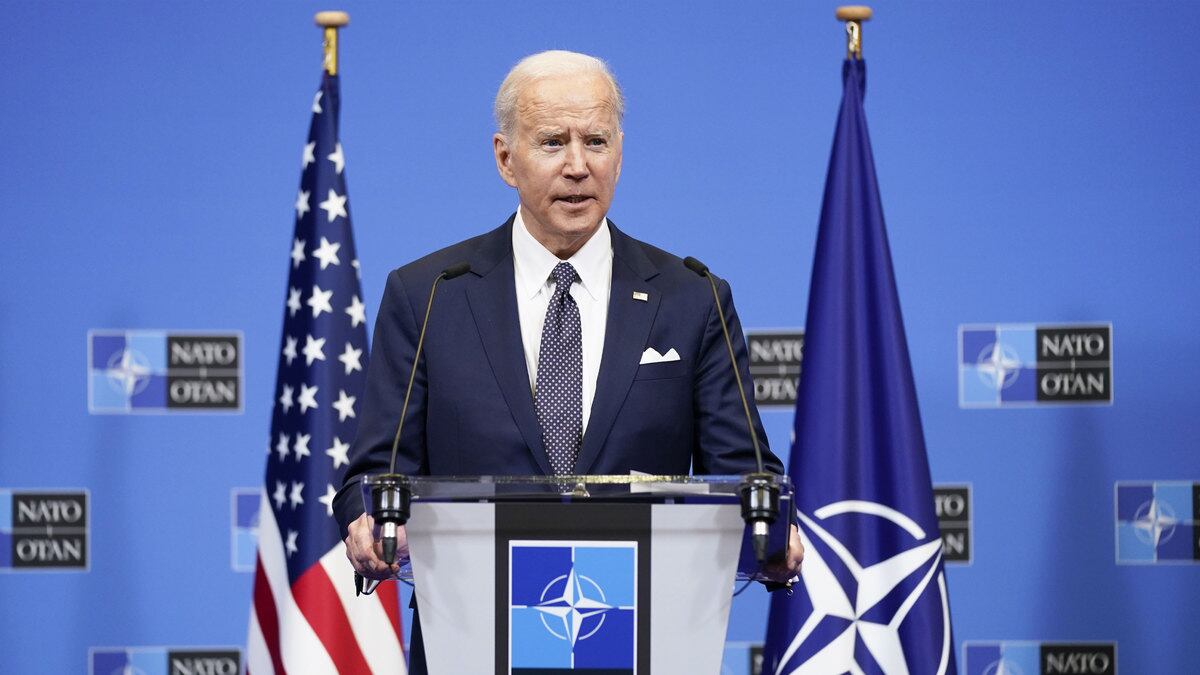The meetings between President Joe Biden and the leaders of the Western alliance in Brussels, Belgium, on Thursday made two things strikingly clear.
First, the post-Cold War era ended on February 24, when Russia illegally invaded Ukraine, and the new strategic imperative for the member states of NATO is adapting to the new realities of a second Cold War.
Next, the leaders of the alliance, displaying great unity and resolve, wish to provide whatever support they can to Ukraine that does not threaten to escalate the current conflict into a third World War.
It was thirty years ago this month that governments of the North Atlantic Alliance and the states of the former Soviet Union met to create a new security architecture for the “post-Cold War” world. Western leaders conducted a series of extraordinary meetings in which they collaborated on the development of “a new, lasting order of peace in Europe through dialogue, partnership, and cooperation.”
By contrast, NATO Secretary General Jens Stoltenberg opened the summit in Brussels by declaring that the alliance must now “respond to a new security reality in Europe.”
President Biden’s National Security Adviser, Jake Sullivan, described one goal of the meeting as establishing a “longer-term game plan” for the deployment of NATO forces along the alliance’s eastern frontiers. U.S. officials told me that this will also be a central component of discussions regarding NATO’s “new strategic concept” to take place at the upcoming NATO Summit, scheduled to take place in Madrid in June. It was also announced that Stoltenberg would stay on as NATO Secretary General for an additional year in order to help the alliance manage the current crisis.
The emergency meetings taking place this week were also intended to define ways that the alliance could provide additional support for Ukraine.
President Biden has indicated the U.S. will do so via the provision of additional military assistance. In a written statement the president said, “We are committed to identifying additional equipment, including air defense systems, to help Ukraine.”
The last point, regarding air defense, has been a sore spot in NATO’s otherwise robust support for Ukraine—a fact made clear during a live video address to the western leaders made by Ukraine’s President Volodomyr Zelenskyy. During his remarks, Zelenskyy made an impassioned plea for even a tiny fraction of Western resources to assist with his country’s thus far remarkable efforts to defend themselves. He called for just “1 percent of all your planes, 1 percent of all your tanks,” as well as for anti-aircraft and anti-ship weapons.
The U.S. also announced its intent to provide $1 billion in aid to Europe to help with refugee relief, and a commitment to accept up to 100,000 Ukrainian refugees into the United States to help ease the growing humanitarian crisis.
It was noteworthy that Zelenskyy’s past calls for a NATO-enforced no-fly-zone were not repeated.
Clearly, Zelenskyy is reluctantly coming to terms with the fact that while NATO is committed to supporting Ukraine, it is also committed to stopping short of providing anything that might trigger a wider escalation of the war, one that might draw in NATO forces and thereby trigger the onset of World War III.
That said, the Brussels discussions also made it clear Western leaders are deeply concerned that—even without such escalation on their part—Putin might soon resort to the use of weapons of mass destruction in Ukraine. (And this is after Putin has already been rightly condemned by the U.S. and many of the allies as a “war criminal.”) Indeed, Zelenskyy asserted that there was further evidence that Putin’s brutality knows no boundaries, with reports of the use of phosphorus weapons against civilian targets in his country—which is against international law.
For their part, Biden and the European leaders resolved to strengthen defenses against WMDs along Europe’s borders with Russia. They also warned Russia that any attacks which employ such weapons, such as a chemical attack, would result in a strong response. (Though U.S. officials have indicated such an attack is in the realm of possibility, it remains unclear what the response would be.)
Indeed, it seems that the level of response to a Russian escalation is the next “big question” looming in this effort to balance the urgent needs of Ukraine with the desire to avoid escalation.
The three-prong approach of the U.S., Europe, and friendly nations elsewhere has been to provide military aid, humanitarian aid, and increasing pressure via sanctions. But each of those efforts has clear limits.
There will be no direct deployment of NATO forces to Ukraine. There will be no no-fly-zone or, for now it seems, aircraft deployments. There will be substantial aid for the more than 3.5 million Ukrainian refugees, but when it comes to accepting the refugees, the appetite to do so differs from nation to nation. And when it comes to sanctions, while the U.S. today announced new sanctions against an additional 400 Russian elites and entities, one recurring message at the summit was that European nations like Germany say they are currently unable to stop purchasing Russian oil and gas.
A point of focus at the summit has been to find ways to reduce Europe’s dependence on Russian energy. EU President Ursula Von Der Leyen laid out a goal of being able to endure for up to two years without the need for Russian resources. This too can be seen as a preparation not just for a longer war in Ukraine but for the realities of the new Cold War II era we are entering.
But should Russia use WMDs, it may well be that the West will have to alter its stance on military support (or on energy sanctions) in order to have the ability to forcefully respond. And that is going to make even more precarious the balancing act between managing the exigencies of the current war, preparation for a new Cold War, and the effort to avoid a broader, more dangerous global conflict.
While the public announcements of support for Ukraine and the solidarity of the alliance will dominate the leaders’ agendas in Europe this week, it is the behind the scenes questions about what might happen should Putin unleash a new wave of barbarity that are the most delicate, and may be the most consequential for the people of Ukraine and of the world.
In Brussels, President Biden declared that NATO is as “strong and united as it has ever been.” All evidence suggests that is true. But the evolving situation in Ukraine, and the big questions left unanswered at this week’s emergency summit, suggest that NATO is also being tested in ways it has seldom (if ever) been.
The most difficult and risk-laden challenges associated with this now one-month-long war in Ukraine, and with the new era into which we have entered, still lie ahead.








